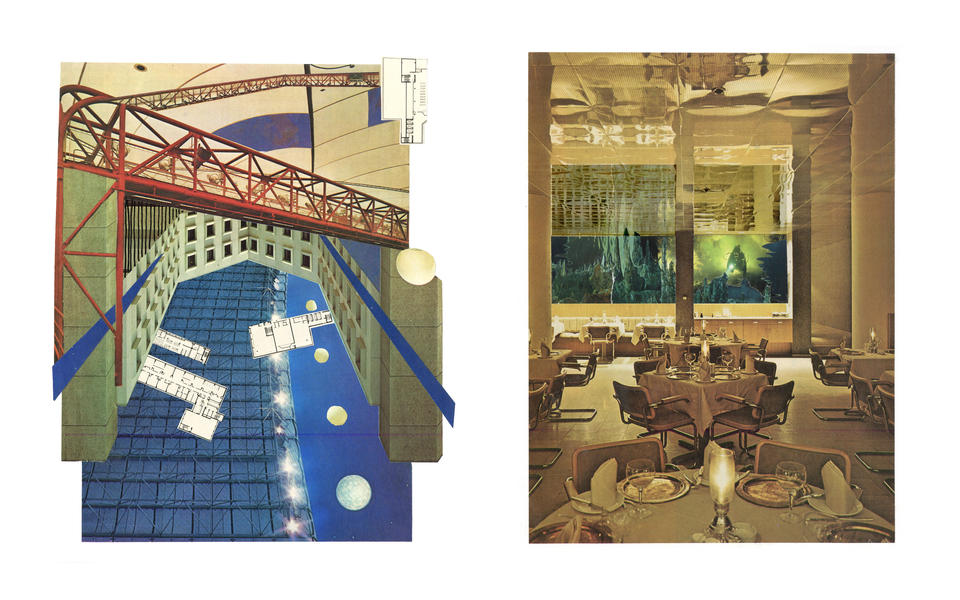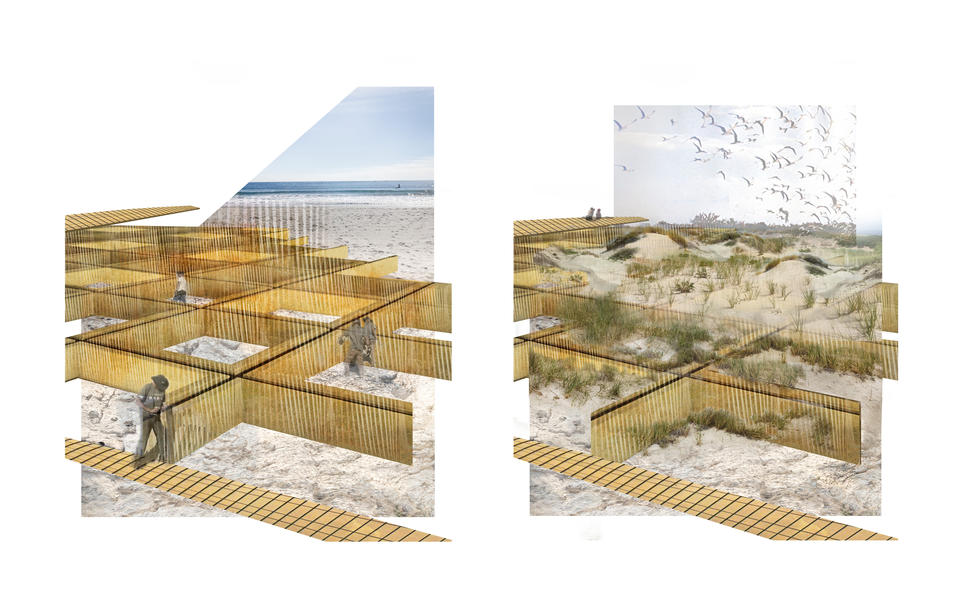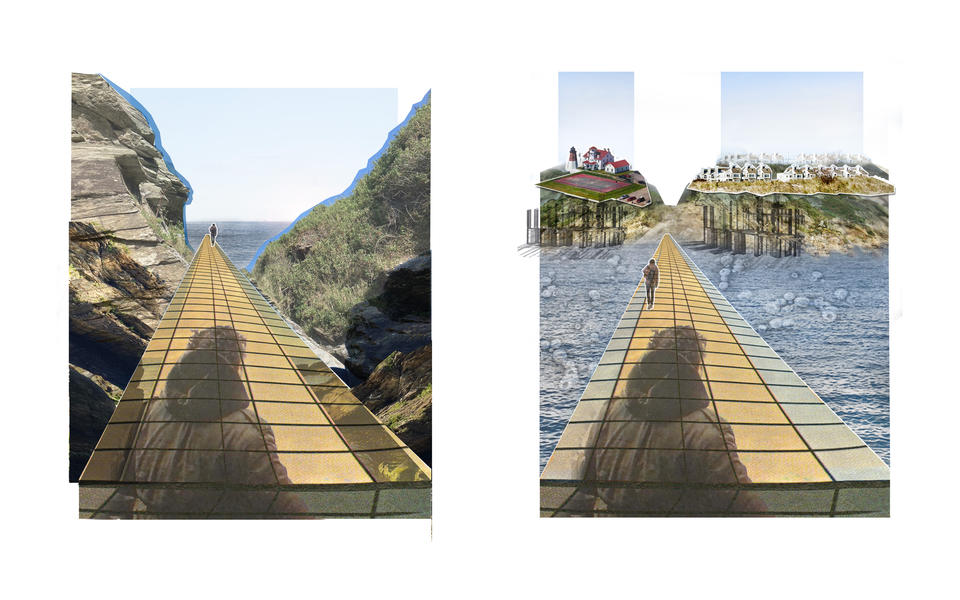Image

Leigh Miller
Offshore Speculation: Generative Ethics for Submerged Lands
The United States stands at the precipice of an offshore wind boom. As renewable energy infrastructures extend seaward, coastal communities must grapple with the visual, ecological, and economic realities of this emerging industry. Extending terrestrial gridded geometries into the sea will fundamentally blur the boundary between submerged and terrestrial lands. It will challenge aesthetic values, scalar interpretations, and memories of place. ‘Offshore Speculation’ opens a dialogue between the discipline of landscape architecture and the Green New Deal, a federal framework that would support a just transition away from fossil fuels. Because landscape architects are adept at visualizing temporal, spatial, and scalar change, they can reveal generative tensions that facilitate advocacy and action toward just transitions. This thesis plunges into the nuanced dynamics of power, energy, and perception of space on, near, and offshore. Offering a common vocabulary and vision for submerged lands and the infrastructures that occupy them, ‘Offshore Speculation’ demonstrates how it may be possible to imagine hybrid and multifunctional futures within and among them.
Image

Surfacing Offshore Operations
Digital collage
2022
As moral imperatives demand urgent action to decarbonize energy systems, offshore wind farms will provide local generation alternatives in dense coastal communities along the East Coast. But pushing industrial infrastructure into the sea will trouble the conscience of even the most devoted environmentalists. This drawing dispels the myth of the ‘untouched’ or ‘virgin’ sea. Fragments of conquest, exploration, and extraction compose the complex sociopolitical region that lies between Rhode Island and Massachusetts. Where do we draw the lines between land and sea? And how do those lines alter the ways that we value visible and submerged lands?
Image
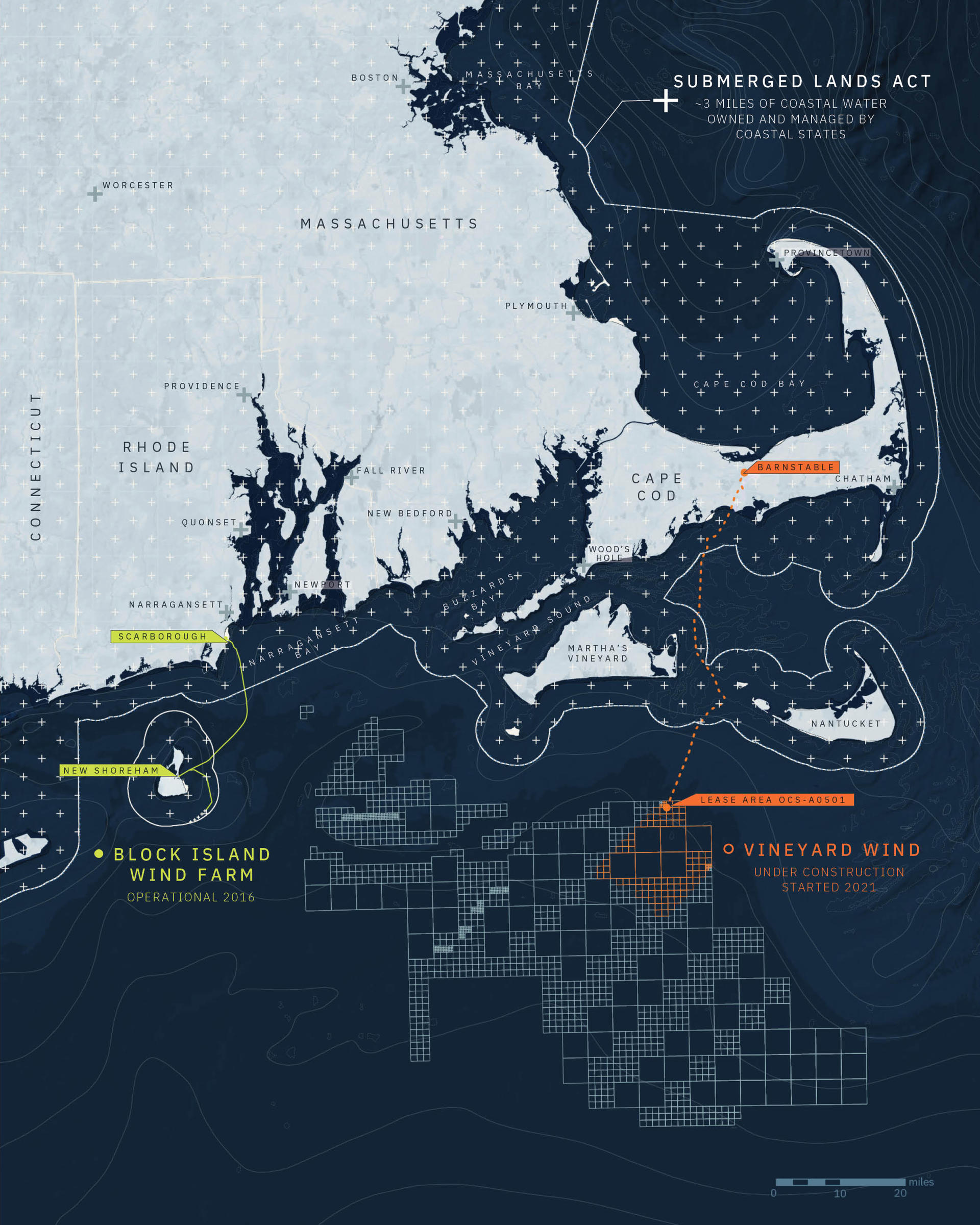
Expanding Offshore
Digital map
2021
Operationalized in 2016, the Block Island Wind Farm was the first offshore wind farm in the United States. This inaugural project features 5 turbines constructed near the island in state-owned submerged lands. As utility-scale projects break ground in the expansive Rhode Island and Massachusetts Leasing Area, visual, ecological, and economic tensions will be challenged from sea to shore.
Image
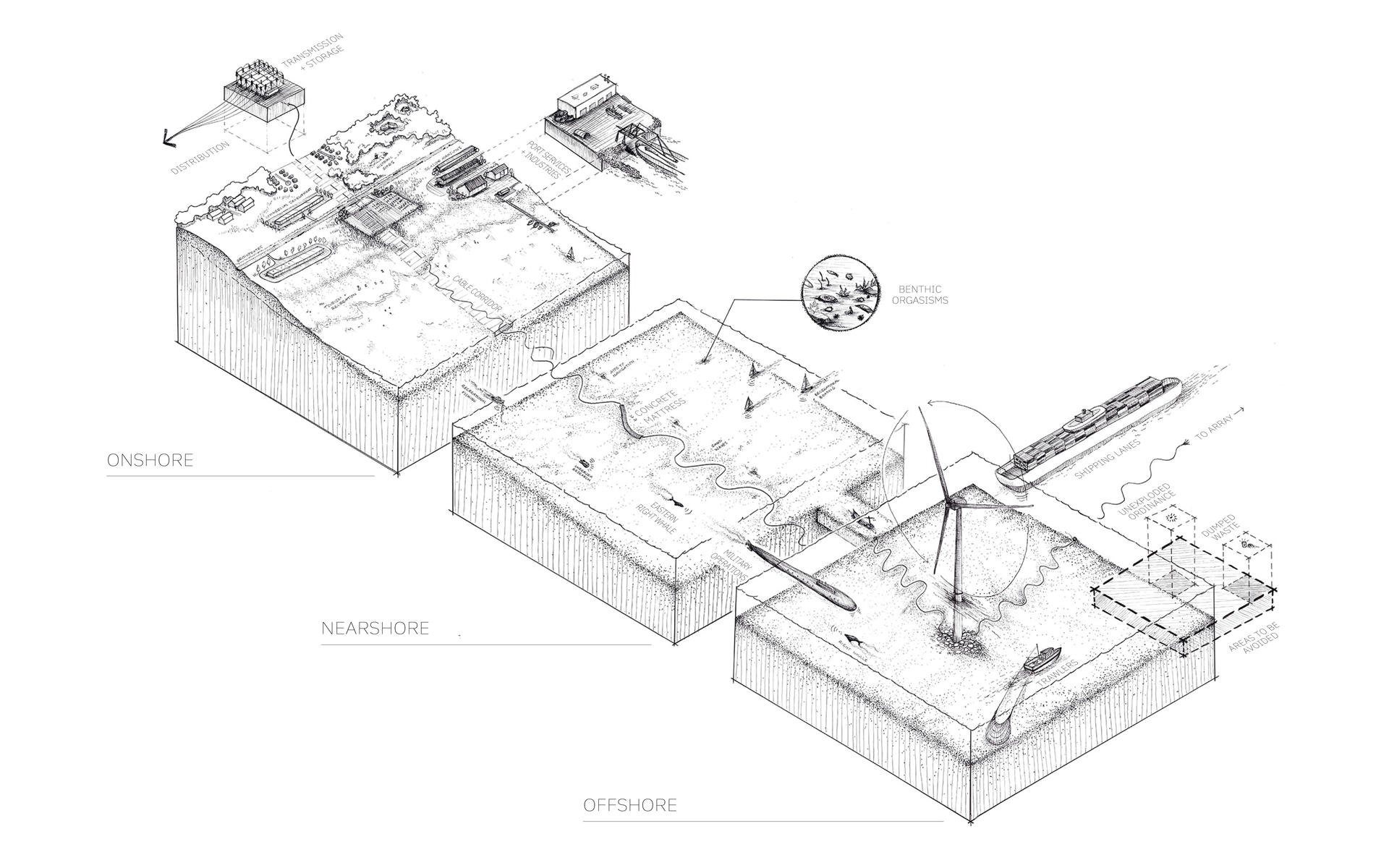
Sea to Shore Operations
Pen and ink on bristol
3 - 24"x36" boards
2022
To understand operations that are distant or invisible, it is critical to demystify constituent components along a typical transect. Spatializing the competing ecological, social, and industrial uses of partially and fully submerged lands reveals the opportunities and constraints necessary to understand emerging energy infrastructures as interconnected systems.
Image

Future Territories
Physical collage
3 - 24"x36" boards
2022
To draw urgency to the ethics of submerged lands in a present that is experiencing increased terrestrial inundation and large-scale seaward expansion, it is necessary to construct and interrogate possible futures. Future Territories employs collage as a method to abstract and recompose planimetric and perspectival conceptions of the jurisdictional territory known as the Rhode Island and Massachusetts Leasing Area. Utopian and dystopian imaginations of this space as a unified state evoke radical hope and caution.
Image
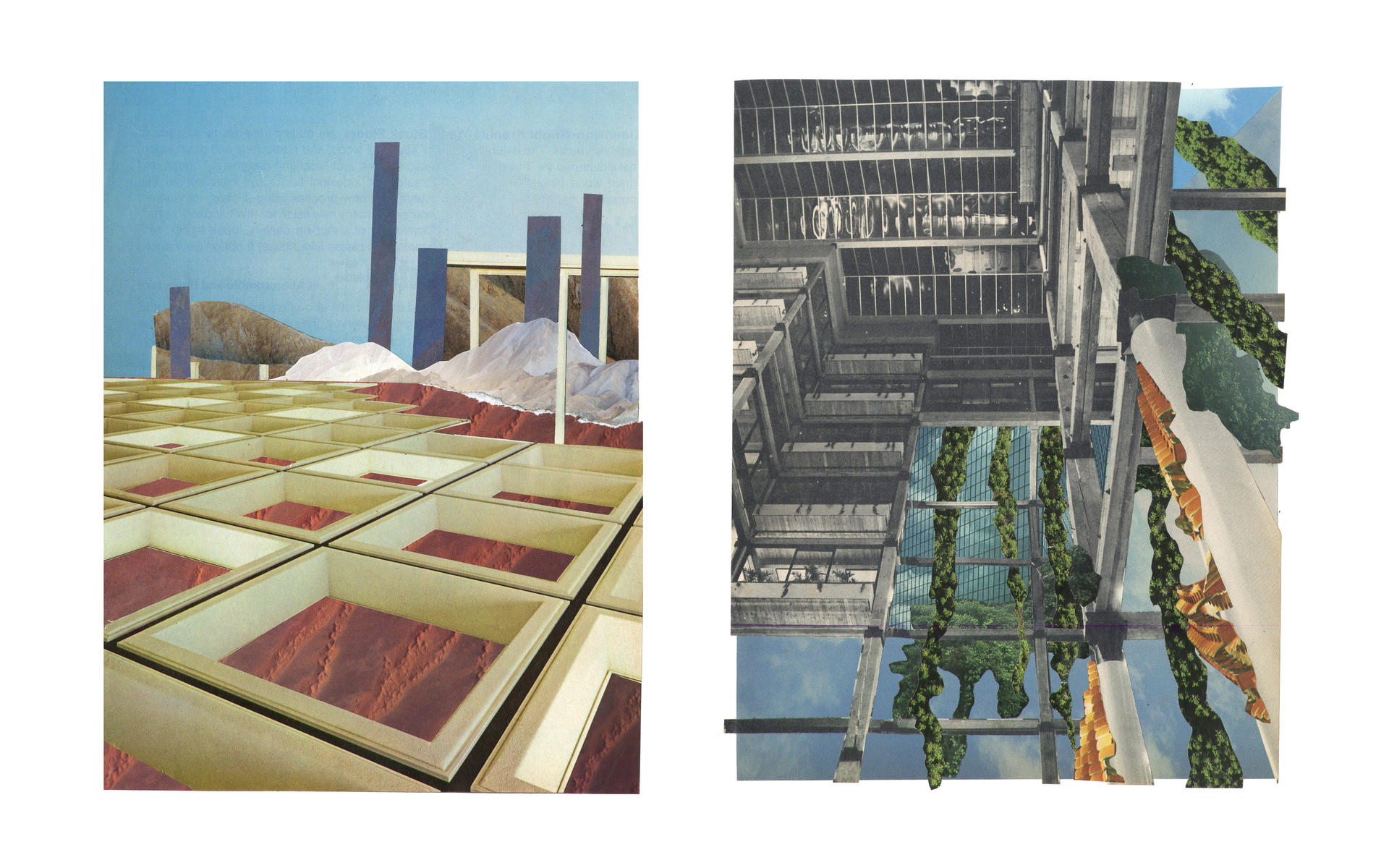
Marine Mine // Kelpical
Physical collage
2 - 10"x16" panels
2022
Two Future Territories collages imagine urbanization of the seafloor and the space above by amplifying present extractive mining practices and positing constructed kelp forests for nutrition, bioplastic development, and carbon sequestration.
- Architecture
- Ceramics
- Design Engineering
- Digital + Media
- Furniture Design
- Global Arts and Cultures
- Glass
- Graphic Design
- Industrial Design
- Interior Architecture
- Jewelry + Metalsmithing
- Landscape Architecture
- Nature-Culture-Sustainability Studies
- Painting
- Photography
- Printmaking
- Sculpture
- TLAD
- Textiles
